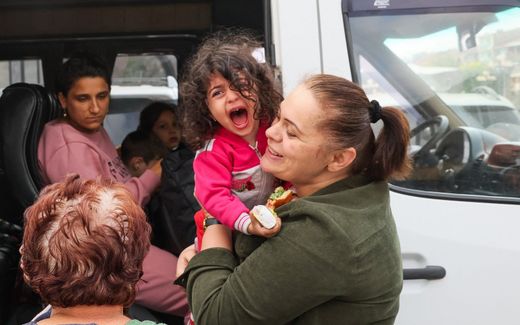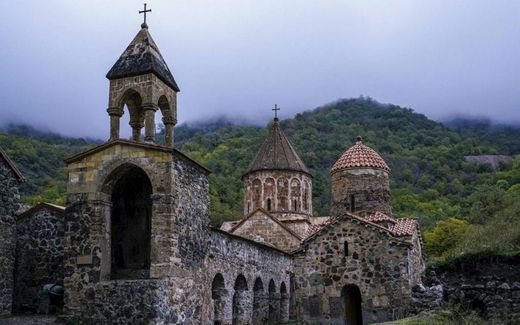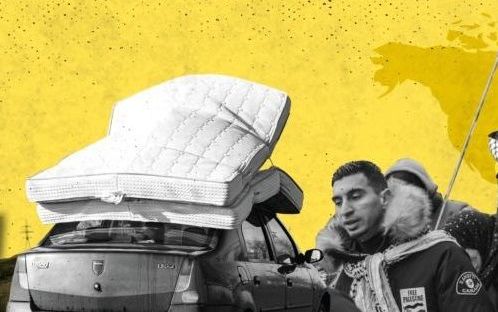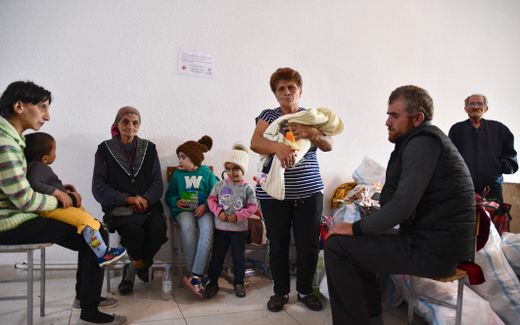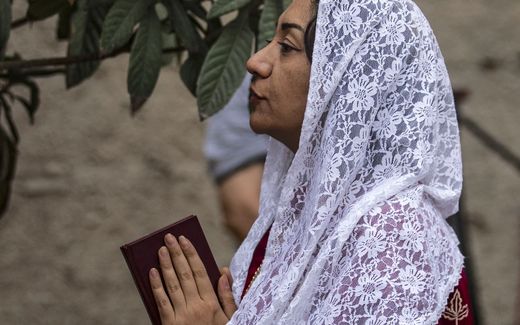Armenian culture in Artsakh is facing erasion
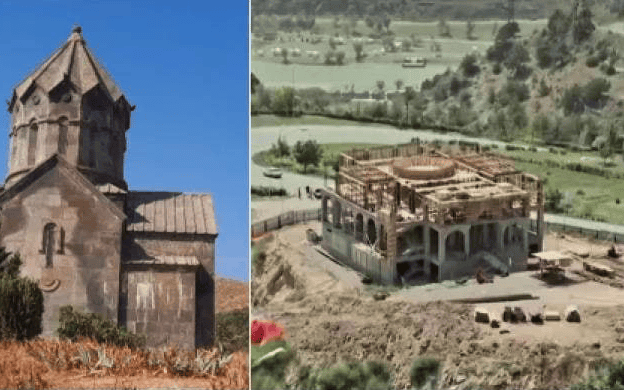
After demolishing the Surb Hambardzum church in Berdzor, the Azerbaijani authorities are building a mosque in its place. Photo Caucasus Heritage
Eastern Europe
One year after they invaded Nagorno-Karabakh, the Azeris are destroying historical and religious symbols in the former enclave. The cultural inheritance of the Armenians is being annihilated. And the international community remains silent. 'And when there is silence, nobody knows, and when nobody knows, nobody will pray for us.'
Stay up to date with Christian news in Europe? Sign up for CNE's newsletter.
The army of Azerbaijan conquered the Republic of Nagorno-Karabakh (Artsakh, as the Armenians call it) in September 2023, and most of the Armenian population fled the enclave. Within a month, 108,000 of the 120,000 Armenians that lived in Nagorno-Karabakh, left their country, most of them moving to Armenia.
Armenia is regarded as the oldest Christian country in the world. Yerevan, the country's capital, is said to be even older than Rome, and two of Jesus' disciples, Bartholomew and Taddeus, have been buried in Armenia as martyrs. The country is scattered with churches and monasteries. But the soldiers of Muslim Azerbaijan are destroying this heritage. The history of a people is being erased. In the near future, nobody will remember that Armenians lived in the enclave and that they were Christians.
Inherently Christian
Craig Simonian was a pastor in New Jersey but moved to Armenia as the regional coordinator of the World Evangelical Alliance. Talking with a Dutchman, he begins the rather vivacious conversation by reminding him that the first bishop of the Netherlands, Servatius, was an Armenian. That underlines that Armenia's culture is inherently Christian and that the country regards itself as an integral part of Europe.
This identity is very much part of the problem. As Simonian tells us, Russia and Iran warned Armenia of its Western sympathies. Moreover, in Simonian's view, what is going on in Artsakh is also part of the Turkish president's ambition to establish something of a new caliphate, of which Azerbaijan will be a part. However, Armenia gets in the way of a geographical unification of Turkey and Azerbaijan.
In Simonian's opinion, the conflict in Artsakh is clearly a part of the struggle between a Muslim and a Christian culture. 'First, they destroy our age-old churches and monasteries. Next, they desecrate our cemeteries. They torture people as "Christian dogs". Come on, it is everywhere.'
Mosques
So what is happening in Artsakh, essentially, is a “rewriting of history”, according to Simonian. “We are witnessing the erasion of a history and a culture, the Armenian Christian culture. Of course, we do not deny Azeri's right to live in Artsakh, but we have been there since the Middle Ages. Old monasteries and cemeteries testify to that. But the Azeri in Azerbaijan have recently created a special TV station, broadcasting programmes to prove that Nakorno-Karabakh is and has always been Azeri. They destroy cathedrals or turn them into mosques, like the Holy Saviour Cathedral. Armenian names are changed into Azeri names. And we sit and see it happen.”

The dreadful events in Azarkh are illustrated by satellite investigations (among others, here and here). The Armenian capital of Stepanakert was renamed 'Chankendi'. Azeri repopulated the abandoned city. The houses of Parliament were destroyed. Shops and hotels were torn down or provided with Azeri texts and symbols. The football stadium received a makeover in the colours of the Azeri flag. One of the streets was renamed after the Turkish soldier Enver Pasha, who played an ugly role during the Armenian genocide of 1915. Also, outside of the capital, the destruction is impressive and depressing.
Dictator
The absence of a political reaction by the international community fills many people with little less than outrage, as the Azeri violated basic human rights of the Armenians and committed serious crimes. One of them is Leen van Dijke (69), a retired Dutch politician whose life has become closely intertwined with Armenia. His oldest daughter married an Armenian man, and he travelled the country often. These travels and conversations were extensively reported and discussed in the Dutch Parliament. After his political career, Van Dijke was involved in many humanitarian projects in Armenia, among others for war victims from Nagorno-Karabakh.
During a recent visit to the country, Van Dijke visited an office of the European Union. 'They told me they were only there on an observation mission. I pointed to the fact that their observations were recorded in official reports. Yes, they admitted, but we must be cautious less the situation escalates.' For Van Dijk, the reason behind this cautious approach is apparent. 'Ursula von der Leyen negotiated a gas deal in Baku and called the Azerian dictator Ilham Aliyev a reliable partner of Europe. This partnership is not to be put to risk by open criticism'.
Atrocities
Just as critical to the international community is Inge Drost, a Dutch woman with Armenian roots and secretary of the Federation of Armenian Organisations in the Netherlands. The present ethnic cleansing reminds her of what happened to the Armenian people in 1915.
'Many people cried out against the recent atrocities, but after October 7 [with the start of the Hamas attack on Israel – bjs], all attention is focused on the Middle East. Moreover, there is this strange phenomenon of schizophrenia in Europe. We hold high standards against Russia, but on the other hand, we need gas from Azerbaijan, and we know that most of this gas comes from Russia. For this reason, we conceal the crimes the Azeris commit in Nagorno-Karabakh. This might lead to the cynical conclusion that there are no international rights, only international interests.'
'Nobody notices' is also Simonian's conclusion. 'People see and feel what is happening, and sometimes they protest. But they will not do anything, fearing being shut down from oil and gas.'
The silence is especially so horrible, Simonian adds, 'because when everybody remains silent, nobody will know what is going on, and when Christians do not know what is going on in Armenia, they will not pray for us. And prayer is decisive.'
History
For centuries, Armenians and Azeris lived together in Nagorno-Karabach/Artsakh. However, when it formed part of the Soviet Union, Nagorno-Karabakh was placed under the power of the Sovjet Republic of Azerbaijan. After the collapse of the Soviet Empire, a war broke out between the Armenians and the Azeri, which the Armenians eventually won. The authoritarian leader of the Azeri, Ilham Aliyev (who has been in power since 2003), used the riches flowing from oil and gas to invest in weapons heavily.
A new war, begun in 2020, was won by the Azeri, after which Russian President Putin issued an armistice. His peace troops, however, did nothing when Baku started a new attack in 2023. During the long blockade of the humanitarian Lachin corridor by the Azeri, which lasted for nine months from December 2022, the Armenian population was starved to death, with no health care and only minimal access to the Red Cross in the region. There was no electricity and no internet. There was some international protest, but no institution made a fist. Left on its own, the region of Artsakh was captured in September 2023, and ever since, the old Christian culture of the Armenians faces the threat of complete eradication.
Related Articles


